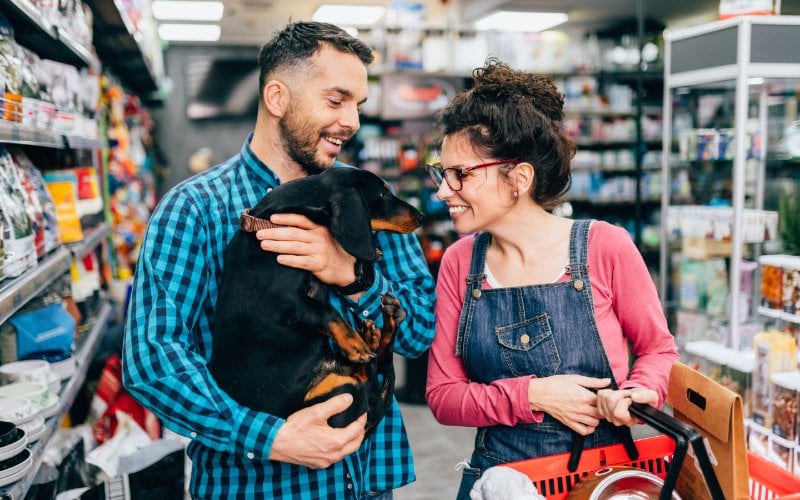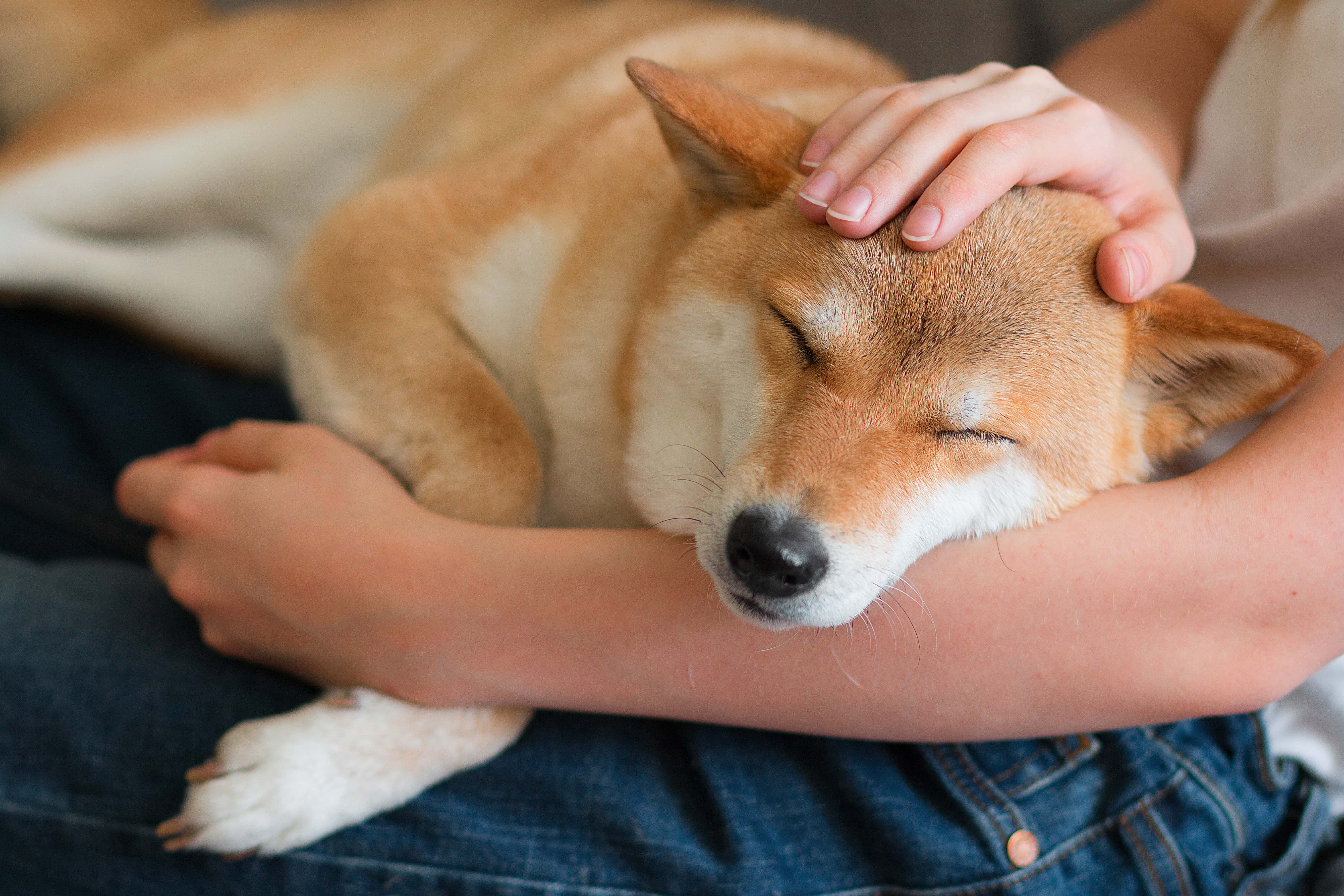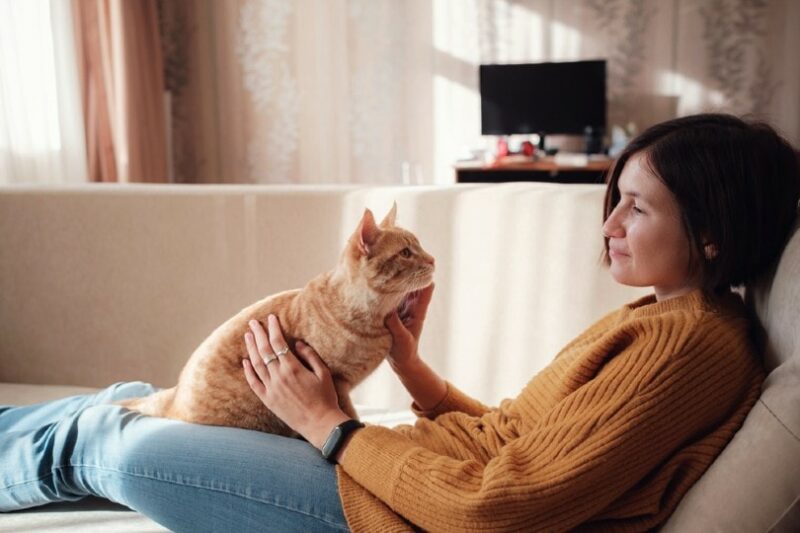There has been a surge in pet ownership since 2020, partly because of the Coronavirus pandemic; this has allowed some interesting studies to be performed that looked at the differences in attitudes towards pet ownership between generations.
From baby boomers to Gen Z, the four generations seem to take a different approach to pet care, including which pets they keep and how they treat them. This article will examine how baby boomers, Gen X, millennials, and Gen Z owners take care of their pets, how pet ownership has changed over time, the spending habits of different generations, and their attitudes towards pets being part of the family.
Classification of Generations
Before we go any further, let’s lay out the classifications and age brackets for the generations we’ll examine:
- Baby boomers are people who were born on or before 1964
- Gen X are born between 1965 and 1980
- Millennials were born between 1981 and 1996
- Gen Z was born from 1997 to 2012
Who Owns the Most Pets? Pet Ownership in Each Generation
Statista conducted a study in February 2022 about the number of pets in each age bracket. Surprisingly, millennials were the top dogs; they owned 30% of the total number of pets in the US. Next were baby boomers, who owned 27% of all pets. Gen X’ers owned 24% of the total pets, and Gen Z owned the least amount of pets at 14%.
This is probably due in part to some of Gen Z still living with their parents, but this number is expected to increase in the coming years. A study by Forbes also noted that 74% of pet owners in the US acquired their pets during the pandemic.
What Pets Does Each Generation Have?
Looking at the kind of pets preferred by each generation, a Forbes survey showed that younger owners like more variety in their pets than older owners (who like dogs and cats).
Baby boomers and Gen X’ers put dogs and cats on top, liking them more than any other pets by a large margin. Millennials and Gen Z also placed cats and dogs at the top of their ownership list, but there was a large jump in the number who kept birds and rabbits compared to previous generations. Gen Z saw a jump in ownership for all pets, including fish, lizards, and turtles.

Dogs are still first out of all the owned pet species across all generations, closely followed by cats. Boomers were likelier to own a bird than Gen X, who staunchly preferred cats and dogs. Gen Z seemed to own the most variety of pets overall.
| Pet Type | GenZ | Millennials | GenX | Boomers |
| Dog | 86% | 66% | 69% | 50% |
| Cat | 81% | 59% | 54% | 42% |
| Hamster/Guinea Pig | 30% | 15% | 5% | 6% |
| Bird | 46% | 20% | 7% | 10% |
| Rabbit | 28% | 19% | 8% | 6% |
| Lizard | 24% | 11% | 5% | 6% |
| Fish | 26% | 12% | 8% | 10% |
| Turtle | 22% | 7% | 2% | 5% |
 Are There Spending Differences Between Generations?
Are There Spending Differences Between Generations?
Generations spend differently on their pets, some possibly out of necessity. A study published by LendingTree showed the total amount spent by each generation. Breaking this down, we can see that out of the $1,163 average spent annually by pet owners in the US, generation Z spent the most: $1,885 annually. Millennials took second place, spending $1,195. Gen X came after that, spending $1,100; boomers spent the least, spending $926 a month on average.
These spending habits may change, however. The study also showed that 32% of millennials struggle to pay for their pets, stating inflation is a problem, followed by Gen Z at 28%. Additionally, of all the costs associated with pet ownership, 74% of pet owners in the study said that food was the most noticeable increase, along with 33% finding the prices of veterinary services rising.
The survey also showed that 45% of pet owners would get into debt to cover an unexpected purchase like veterinary treatment if it costs $1,000 or more. In addition, 90% of the respondents spent an average of $86 per month on their pets, and an alarming 8% are currently in debt due to past expenses. Millennial pet owners, in particular, are most likely to spend any amount on their pets if they need it; they spend an average of $915 per year on their pet and say they’d be willing to spend up to $2,000 if their pet were sick and needed treatment. Baby boomers are the generation least likely to get into debt for their pets, spending less than any other generation on their pets.
Millennials were also most likely to spend money on a pet supplies subscription box, with 10% stating they already use one. Generation X was a close second, with 7%, and only 3% of baby boomers said they use one.
Social media also plays a part in pet ownership, with 40% of millennials spending money on their pets from social media, like buying outfits found online for Christmas or Halloween.
Millennials seem to spend most in every category; an American Pet Products Association survey stated that millennials were the most likely to agree they spent more on their pets in August of 2022 than in previous months. However, they also wanted to reduce their spending on pet food and supplies in the coming months. The survey details that 49% of millennials plan to spend less money on pet supplies, and 37% plan to spend less on pet food.

Pet Insurance
Pet insurance has a part to play. The study by Forbes states that 21% of pet owners plan to buy pet insurance this year and that 50% already have pet insurance in place to protect their pets. However, baby boomers were the least likely generation to say they have pet insurance and most likely to say they don’t intend to buy it. Only 8% of baby boomers said they had pet insurance for all their pets, with 14% planning on buying it, sharply contrasting with millennials’ views.
Millennials came out on top, with 36% saying all their pets are insured and 21% saying they would buy insurance. Gen Z also showed they wanted to protect their pets, with 32% stating they had insurance for all of their pets and 30% stating they wanted to buy it, more than any other generation. A third of those with pet insurance said they spent between $151 and $300 a year on their insurance plans.

 Are Pets Family?
Are Pets Family?
Millennials are often quoted as saying that pets are their children, possibly because many millennials start families later in life. The rising costs of living and the unstable environment covid-19 produced can also factor into their decision, meaning millennials’ pets are treated like cherished family members. The attitudes towards and values placed on pets are different across the generations. Both millennials and Gen Z spend more money on their pets than any other generation.
All generations felt that pets were part of the family. When asked, “Are your pets your fur babies?” both millennials and boomers answered yes at 75%. Gen X was most likely to agree, with 80% agreeing that their pets were their babies. This could be because most of Gen X’s children (if they had any) would have moved out by the time the survey by Statista was taken (2020), so their pets fill the “empty nest.”
The quality of items that different generations want for their pets also differs; millennials stated they would pay more for ethically sourced, US-made, or more eco-friendly pet products with a brand name. Gen Z seemed to pay more for the same but showed that the brand name didn’t make much difference in which products they purchased.
In terms of value, surprisingly, baby boomers and Gen X’ers were most likely to recognize the social and emotional benefits of owning a pet, particularly as they mostly own cats and dogs. It’s easy to see how this came about; there have been numerous studies on the health benefits of cat and dog ownership, both of which can help with mental and physical health conditions. For example, twenty-five years of research have concluded that pet ownership can lower blood pressure, boost immunity, improve heart health, and improve symptoms of mental illnesses like anxiety and depression.

Final Thoughts
Pet ownership differs across generations in more than just the number of pets owned. Millennials have the most pets across all four generations; they spend the most on them, make sure they’re covered by insurance, and treat them to special gifts or luxuries.
Conversely, Millennials also feel the squeeze of financial pressure more than other generations, and they plan to cut back on the number of items purchased. Boomers and Gen X’ers see the holistic value of pets the most despite being less likely to pay out for them and spending the least money overall. The older generations saw pets as a way to bring the family together, while millennials are taking on pets to become their children and create a new nuclear family.
See also: How Is Inflation Impacting Pet Owners? 10 Interesting Statistics
Featured Image By: U__Photo, Shutterstock













